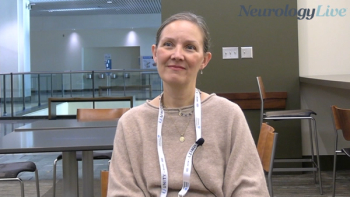
Axitinib Nears Approval as Second-Line Therapy for Metastatic Renal Cell Carcinoma
Axitinib has shown promising results in phase II and III trials, including the AXIS trial in patients with metastatic clear cell RCC who failed on other treatments.
Brian I. Rini, MD
Axitinib, a potent second-generation inhibitor of vascular endothelial growth factor receptor (VEGFR)-1, -2, and -3, has shown promising results in phase II and III trials, including the AXIS trial in patients with metastatic clear cell renal cell carcinoma (RCC) who failed on other treatments.
The Oncology Drugs Advisory Committee (ODAC) met in early December and voted unanimously to recommend axitinib for approval to treat patients with advanced RCC. The role of this new agent is being defined by ongoing studies. (
“Axitinib is a more potent VEGFR inhibitor (compared with first-generation tyrosine kinase inhibitors [TKIs]), which we hope will translate to clinical benefit,” said Brian I. Rini, MD, associate professor of Medicine at the Cleveland Clinic Foundation in Ohio. He discussed studies of axitinib at the recent meeting of the Chemotherapy Foundation Symposium.
Previous phase II trials of treatment-refractory patients with metastatic clear cell RCC showed a good response and median progression-free survival (PFS) ranging from 7 to 13 months.
The randomized phase III AXIS trial compared axitinib with sorafenib as second-line therapy in 723 patients with clear cell metastatic RCC who failed on first-line sunitinib, bevacizumab, or interferon-α. Median age was 60 years, and most were males. Although not a required criterion for inclusion in the study, prior nephrectomy was performed in about 90% of patients; 54% had prior sunitinib; 35% had prior cytokine treatment; 8% had prior bevacizumab; and 3% had prior temsirolimus.
One-third had favorable prognostic characteristics, onethird had intermediate prognostic characteristics, and one-third had poor prognosis, according to the Motzer Memorial Sloan-Kettering Cancer Center criteria.
Axitinib improved PFS, the primary endpoint, from 4.7 months with sorafenib to 6.7 months (P =.0001), representing a 44% reduced risk of progression. Patients treated with prior cytokines had the best PFS, while those treated with sunitinib had a more modest benefit from axitinib, Rini said.
Adverse events were typical of those seen with TKIs, including diarrhea, hand/foot syndrome, and hypertension. No abnormalities were seen in liver function tests.
Previous phase II trials of axitinib and other TKIs in RCC suggested that there was a survival advantage for patients who developed hypertension on treatment (ie, at least 1 diastolic blood pressure reading of >90 mm Hg).
“This is the first signal that hypertension may be a biomarker of response, but patients have to be on therapy to develop hypertension, so you can’t select patients for it. However, this finding is hypothesisgenerating,” Rini told attendees.
An ongoing randomized phase II trial is looking at untreated metastatic RCC patients receiving the standard dose of axitinib 5 mg twice a day; patients who do not develop hypertension or other limiting toxicities are randomized to dose escalation or not, and the primary endpoint is a comparison of overall response rate between the 2 arms.
An ongoing phase III trial is comparing axitinib versus sorafenib in patients with no prior systemic first-line therapy or progressive disease after 1 prior systemic first-line regimen for metastatic RCC with sunitinib, cytokines, or both.
“The phase III data show that axitinib is superior to sorafenib as second-line therapy. We await the front-line data. Toxicities are as expected and include diarrhea, hypertension, fatigue, nausea, proteinuria, and hoarseness. Data from these pending trials and other studies will define the role of axitinib in metastatic RCC,” Rini said.
Commenting on Rini’s presentation, William K. Oh, MD, said that the AXIS trial demonstrates that axitinib is superior as second-line therapy compared with sorafenib, the current standard of care. “It is not clear if giving a VEGFR inhibitor as second-line therapy is the best strategy if you’ve given one as first-line therapy. Axitinib is another potent VEGF inhibitor option,” said Oh, chief of the Division of Hematology and Medical Oncology; and the Ezra M. Greenspan Professor in Clinical Cancer Therapeutics at the Mount Sinai School of Medicine in New York City. “In my view, the side-effect profile is most important,” Oh continued. “Axitinib is less difficult to tolerate than sorafenib, and that combined with its potency should make it a standard of care [for second-line therapy].”
Newsletter
Stay at the forefront of cutting-edge science with CGT—your direct line to expert insights, breakthrough data, and real-time coverage of the latest advancements in cell and gene therapy.











































